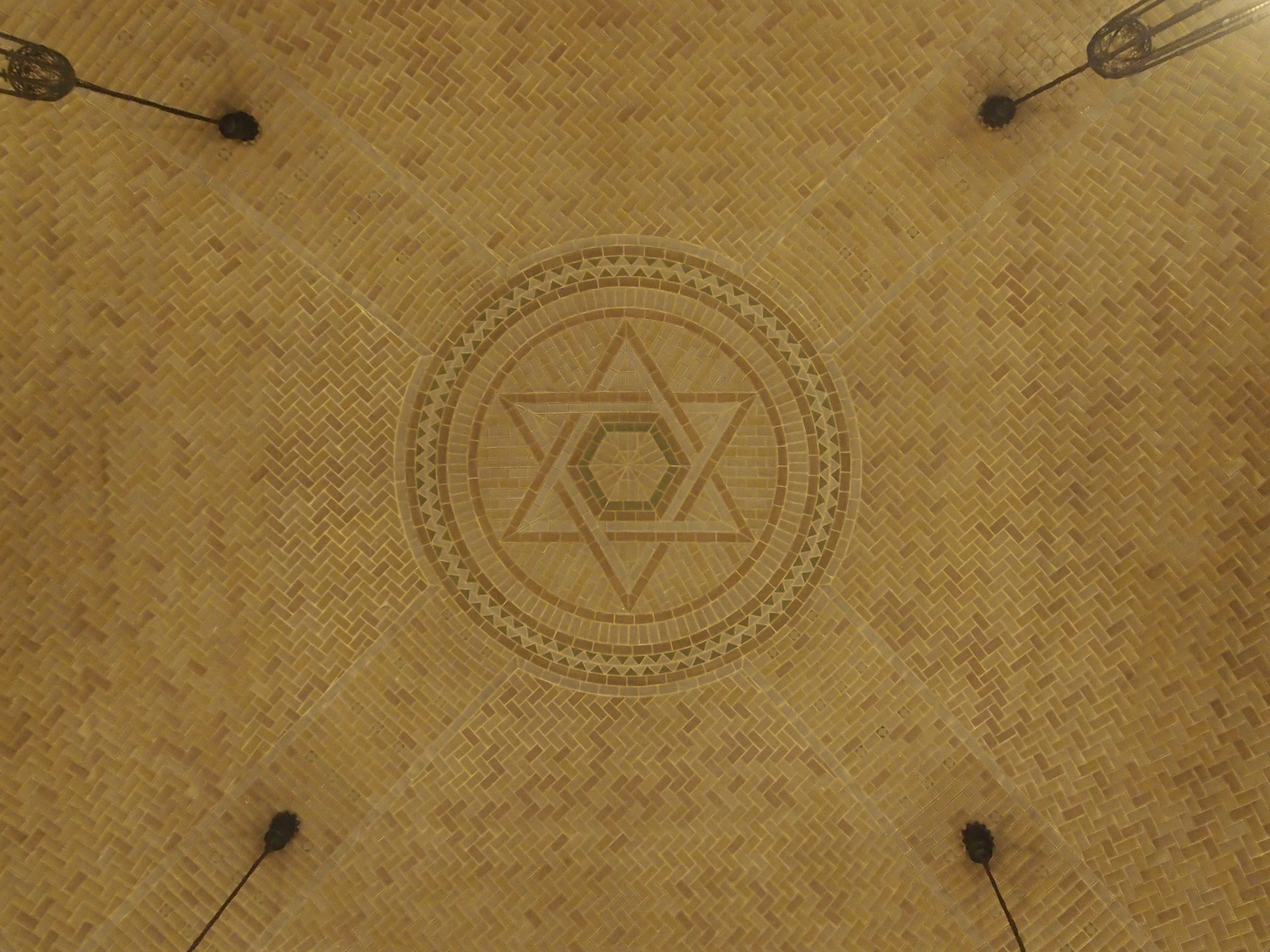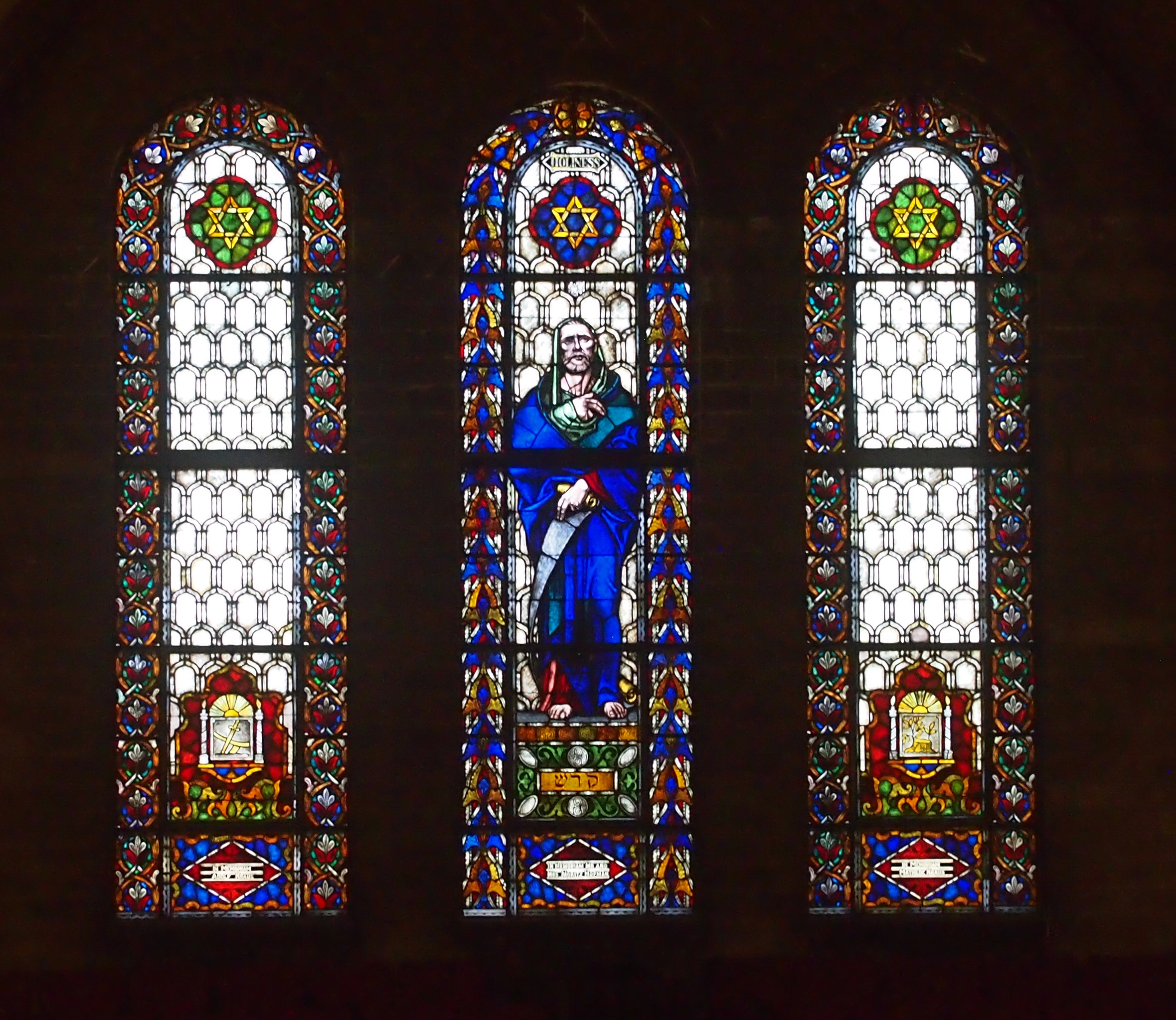One synagogue open for Open House Chicago last weekend was KAM Isaiah Israel in Hyde Park. It’s across the street from the Obama residence, in fact, though I’m certain that’s a coincidence, and besides, the synagogue’s been there a lot longer.
“KAM Isaiah Israel is the oldest Jewish congregation in the Midwest and its leaders, members and buildings have played an important role in Jewish history, American social justice movements, and architectural history,” Open House says. (KAM = Kehilath Anshe Maarav = “Congregation of the Men of the West.”)
“KAM was founded in 1847 and had several locations in Chicago before settling in Hyde Park… The synagogue’s architecture [Alfred S. Alschuler] was inspired by Byzantine structures and an ancient synagogue in Tiberias, Israel.”
There’s an impressive dome, but I didn’t capture it.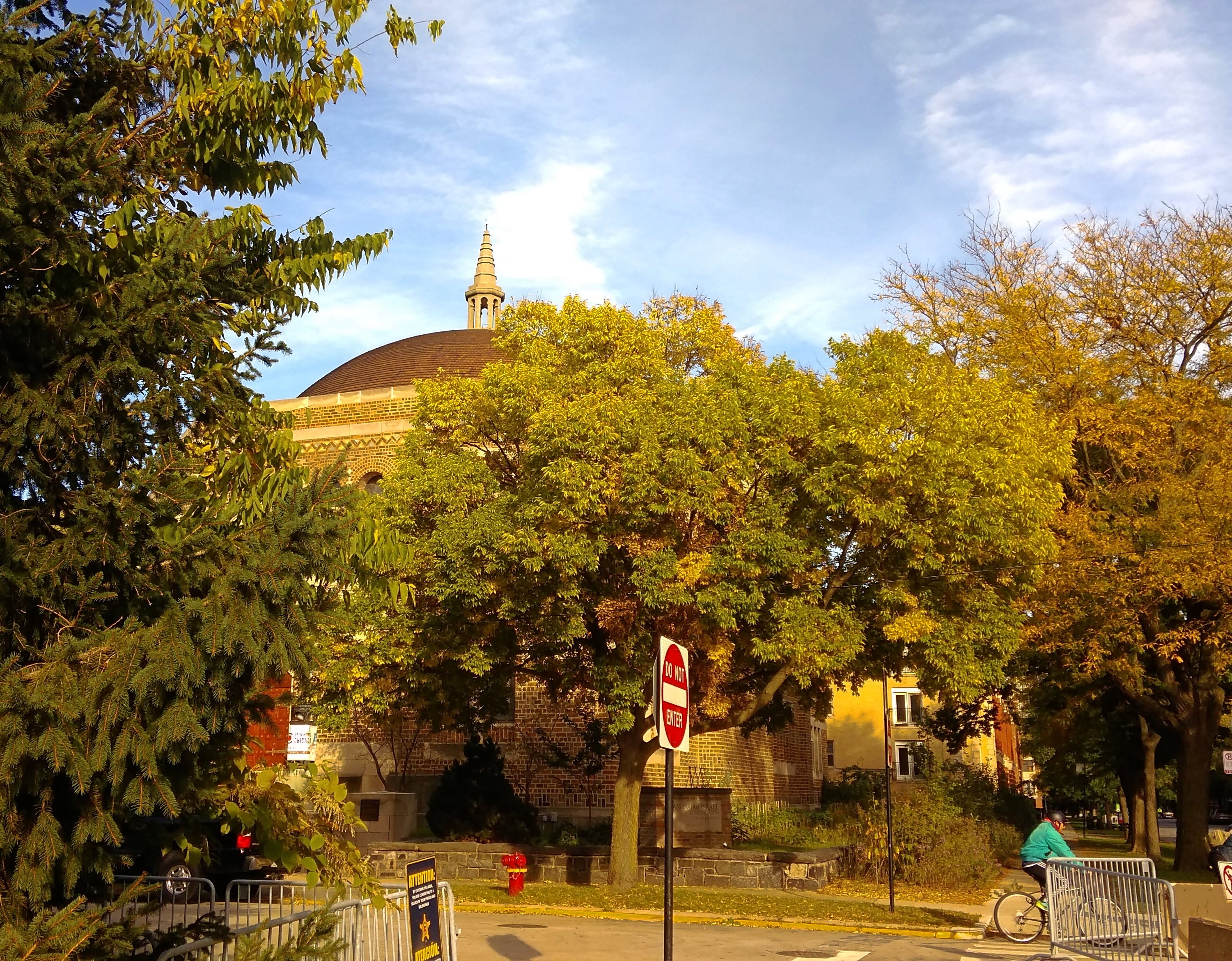
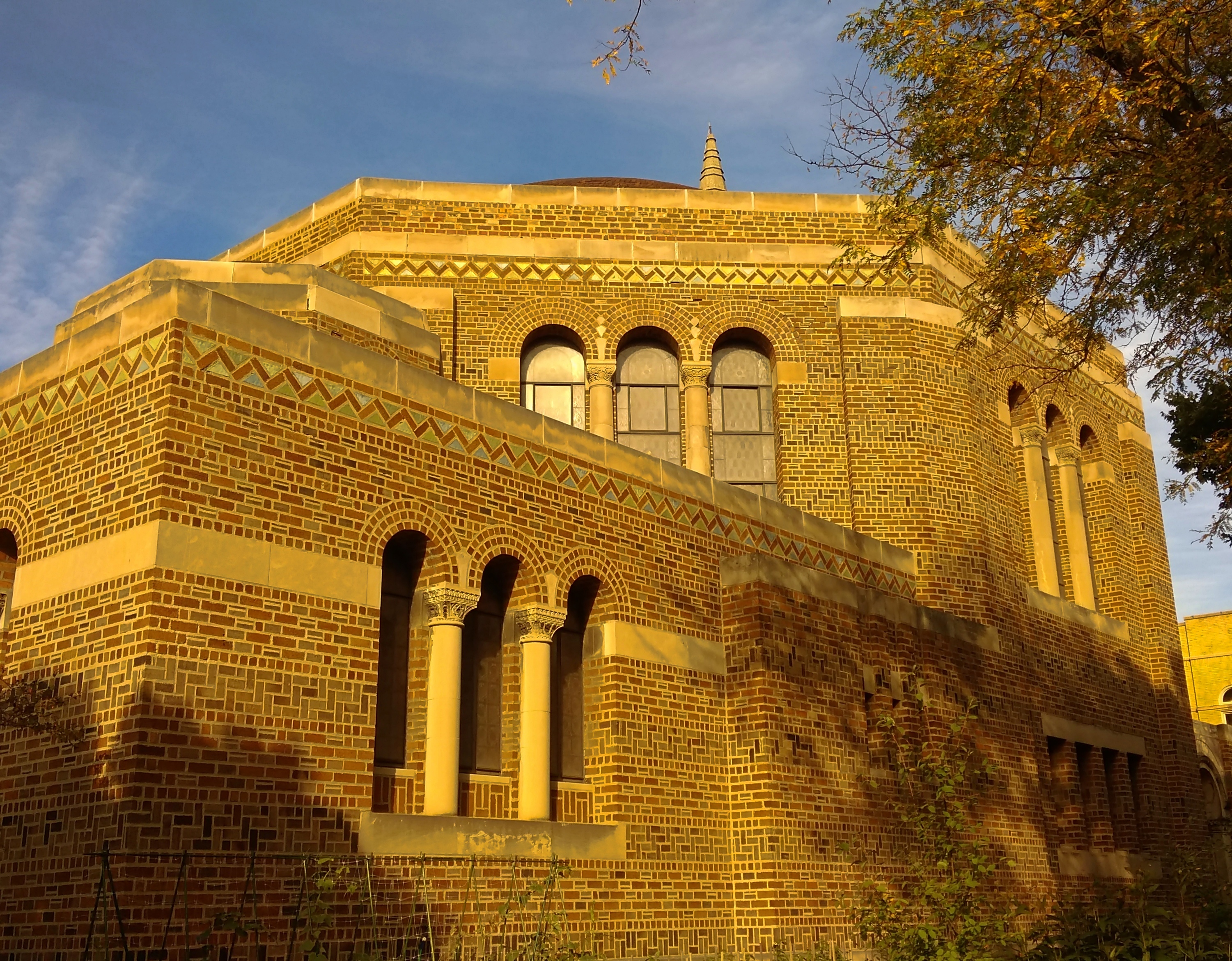
The entrance, also impressive.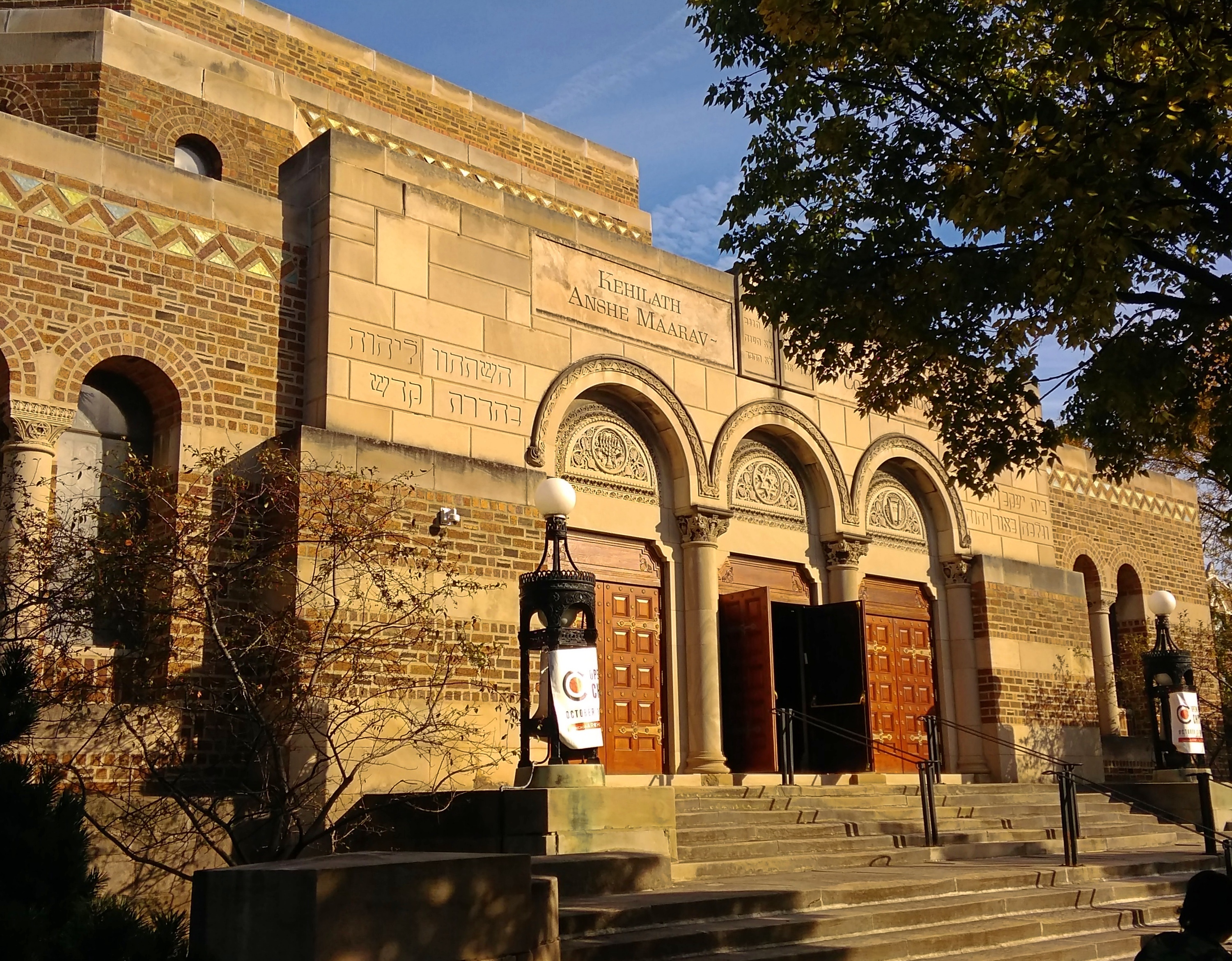
“Although KAM began as an Orthodox congregation, our members began to reform their practice almost from the beginning,” the synagogue web site says. “In 1852, conflict over issues of Reform and traditional observances led to the creation of a new congregation, B’nai Sholom. In 1874, KAM became a founding member of the Union of American Hebrew Congregations, now known as the Union for Reform Judaism.”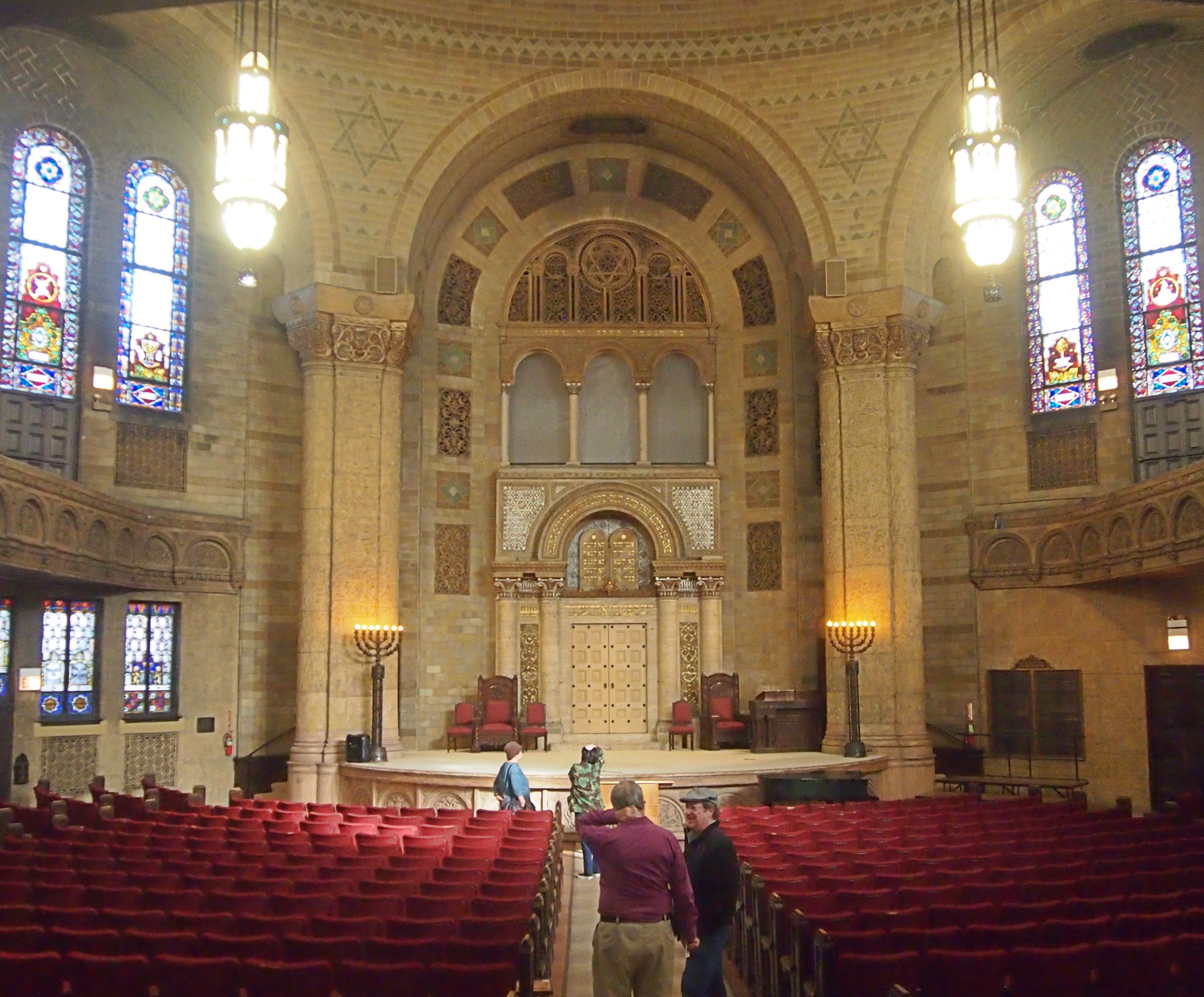
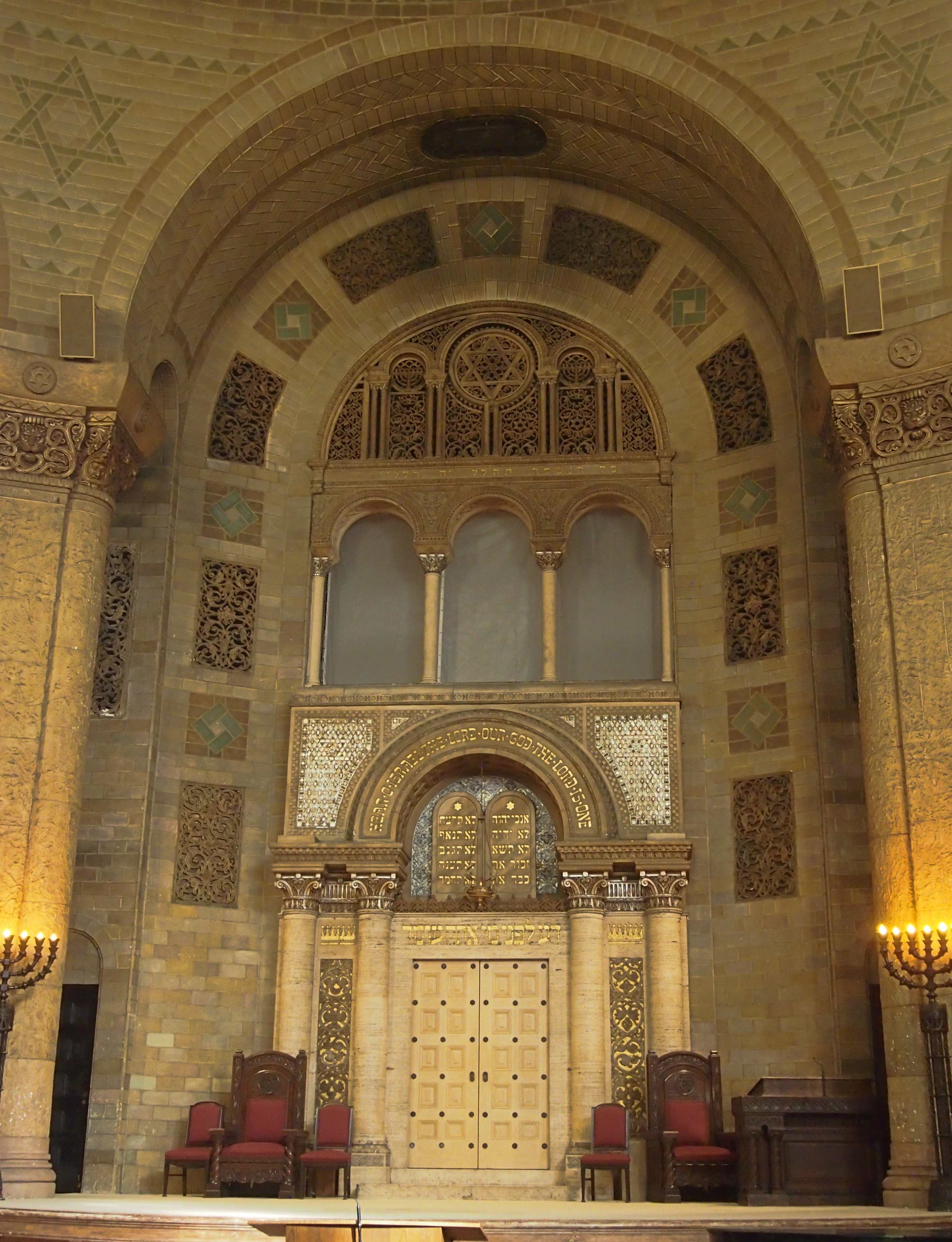
The other synagogue we visited was out in the near western suburb of River Forest: Temple Har Zion. It’s a modernist work of Loebl, Schlossman and Bennett, completed in 1953. 
The building is divided into two large parts. The sanctuary.

On the other side of the wall is Gottlieb Hall, just as large, but without any seats. Its main feature are five stained glass windows designed by William Gropper in 1967, which my pictures do no justice to. Gropper’s best known as a cartoonist.

“Instead of traditional stained glass techniques, Gropper used one inch thick chunks of brilliantly colored glass which were cut to shape and chipped or faceted on the surface,” Temple Har Zion says. “Each window is two stories high and contain 11 panels of this chiseled glass set in a matrix… these vibrant windows which represent some of the most familiar stories of Genesis.”
One of the fascinations of the windows is working from top to bottom — and right to left — to pick out the stories of Genesis chronologically. This is the far right window, starting with Creation toward the top and working down to the creatures of the land and sea toward the bottom.

A detail of the next window: the Flood.

Anyone who insists that the 1960s was a poor period for design isn’t looking hard enough.
